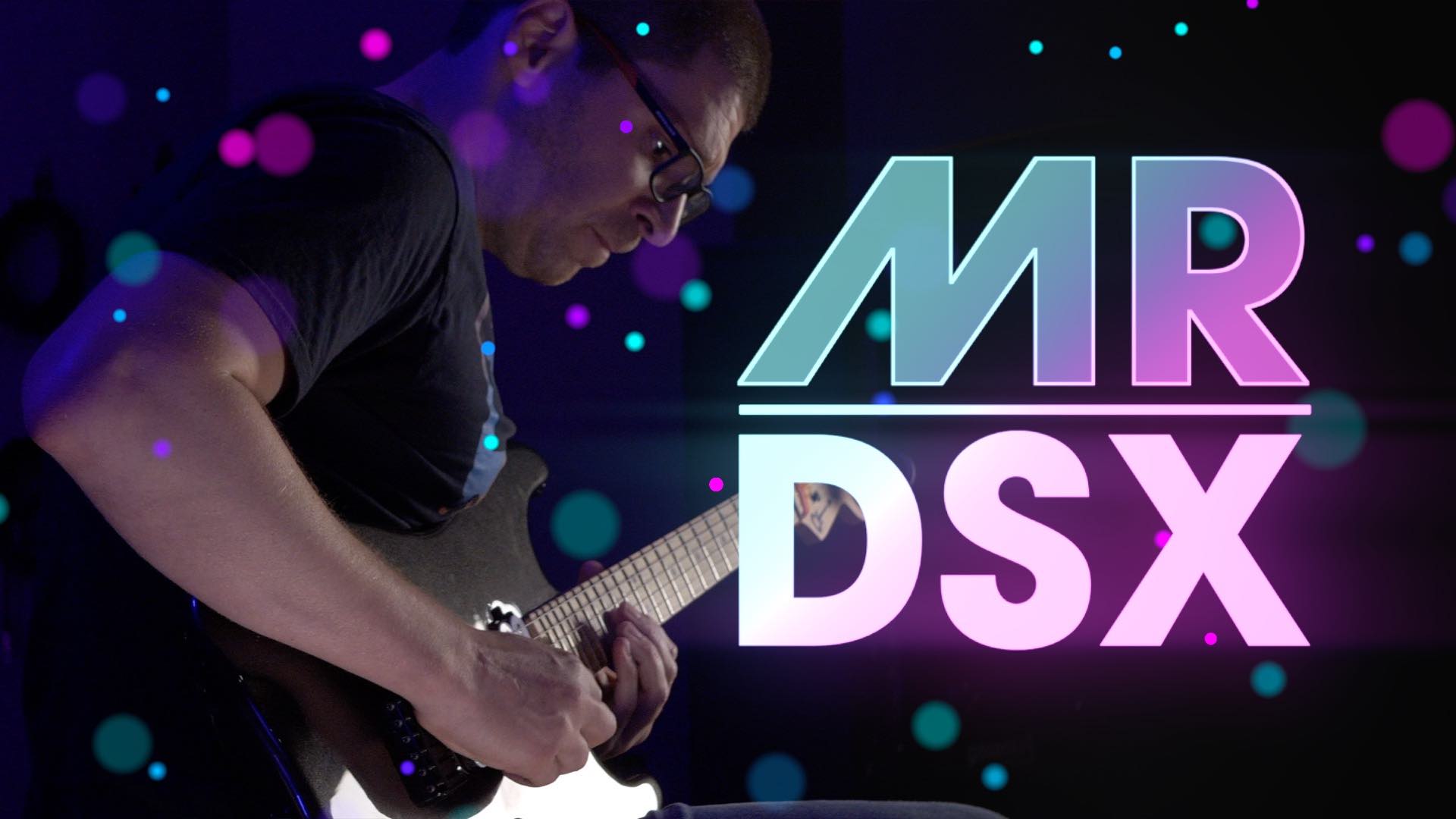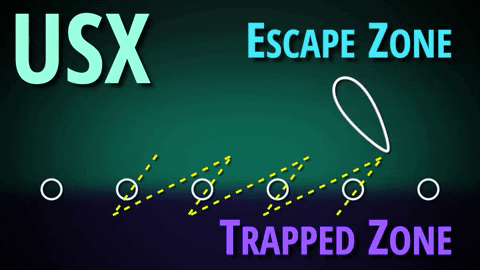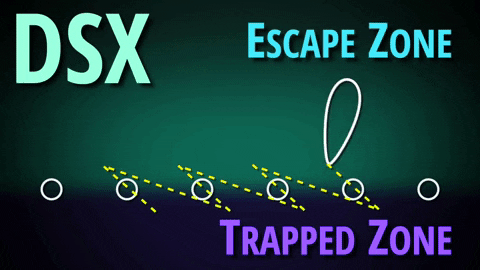
Cracking The Code seminars take a leap forward with Metronomic Rock, a new instructional series hosted by the amazing Tommaso “Tommo” Tufarelli on the Cracking the Code team. Metronomic Rock is an homage to a time when hair was big, string skips were bigger, and guitar heroes subdivided the beat with metronomic precision! In this first installment of the series, Tommo pulls back the curtain on one of the most popular escape motions of all time: DSX Motion.
For a quick overview, watch the MR | DSX introductory chapter:
Why DSX?
When players come to us for consultation on their mechanics, understanding their current capabilities is one of the most important early steps we take. We do this with a battery of physical tests of joint motion speed, and simple musical test phrases like the tremolo. Probably seven or eight times out of ten, when a player succeeds in generating rapid, efficient picking motion, there is one type of escape we see in their slow-motion footage: DSX Motion.
This is perhaps surprising since some of the most famous picking technicians of all time are USX players. Yngwie Malmsteen, Eric Johnson, Django Reinhardt, and George Benson, with their distinctive downward pickslants, have all sent generations of players to the woodshed to learn their influential styles. But these styles, while influential, may not necessarily be the ones most new players end up with.

The reason for the ubiquity of DSX motion is mechanical. The escape path you generate is based on the type of joint motion you use for fast playing. And the most common joint motions that new players discover when told to explore intuitively are all DSX motions. This includes the elbow, which can only generate DSX when operating by itself, and also the wrist, whose most common motion — the one used by Al Di Meola and John McLaughlin — is also a type of DSX picking motion. The majority of players we consult with in Technique Critique find their way to one of these two types of motions when first trying to pick fast.
Unlocking The Rock
What this means is that the world is absolutely filled with DSX players. These are players whose best joint motion, when going fast, generates the hallmark diagonal motion of DSX, where downstrokes do the string switching. For these players, a trove of clean, fast, picking power awaits simply by playing phrases that are designed to unlock it.

That’s where Metronomic Rock comes in. Across over 30 lesson chapters and more than 150 musical examples, Tommo outlines the core mechanical strategies common to great DSX players. Musically, the Metronomic Rock series takes its inspiration from the golden era of shred technique in the ’80s. As we originally revealed in our groundbreaking Antigravity Seminar, pioneering players like Michael Angelo Batio, Paul Gilbert, and Vinnie Moore, all use DSX mechanics as the foundation of their legendary techniques and favored phrases that align with this popular escape motion.
The musical examples in MR|DSX highlight these stylistic signatures, from three-note-per-string scale playing to string-skipping arpeggios. If you’re a fan of high-gain rock leads and high-amplitude hair styles, you’ll feel right at home with the two amazing demonstration songs Tommo has composed for the course.
What’s Included
MR|DSX covers an expansive list of mechanical and creative topics, including:
- An overview of DSX mechanics
- Downstroke- and upstroke-on-downbeat organization
- High-speed scale playing
- Optimizing shapes for rapid string switching
- Position-shifting strategies
- Two-string and string-skipping arpeggios
- Creating efficient pentatonic lines
- Legato and hybrid escape techniques
- Classic metronomic patterns and why they work
- Compositional tricks for generating novel phrases
The complete MR|DSX package includes:
- 39 lessons
- 157 musical examples with tablature
- Two complete songs demonstrating all techniques
- Tracks for each song, including isolated backing and lead parts
- Detailed tablature with all picking instructions notated
- Aquanet™, Spandex™, and band flyers/staple gun not included!
Is MR|DSX For Me?
Like Cracking the Code’s Volcano and Cascade seminars, MR|DSX is a 200-level Cracking the Code lesson requiring a basic operating proficiency in at least one escape motion — in this case, DSX motion.
If you’ve worked through the Pickslanting Primer, then you already know whether you’re a DSX player. If not, a relevant benchmark is the ability to perform a tremolo with a DSX escape path. Once you have that, MR|DSX is the lesson that takes that mechanical foundation and makes it musical:
If you’re new to Cracking the Code, and not sure what DSX motion is, here’s a free explainer on the subject. Just keep in mind that attempting to mimic these motions at slow speed is not a good way to learn them, and will not work with the lessons in MR|DSX. Instead, the only reliable test of escape motion is whether you can do it while picking quickly on simple phrases like a tremolo. For instructions on doing this, head over to the Pickslanting Primer to test your technique and discover your escape motion superpower!



@tommo’s new seminar, Metronomic Rock | DSX, is in the wild. Sorry for the delay on doing a forum post about this — there are just so many steps involved in getting large items like this on the site, but the forum post was always on the list.
Why DSX? In our teaching, most players that come to us for instruction are DSX players. We think this flows from simple mechanical origins: the most common postures and joint motions that people are likely to stumble across when self-teaching are elbow motion and reverse-dart wrist motion. Elbow motion is exclusively DSX when operating on its own, and reverse-dart wrist is usually DSX, just given the arm position most players use. In particular, the “2:00” motion used by Al Di Meola and John McLaughlin appears among players of just about every plucked instrument on earth, from guitar to mandolin to domra to electric bass (Chris Squire, for example).
So obviously this is a starting point we need to address in our more musically-focused lessons. We already have two seminars on USX technique in the form of the Eric Johnson and Yngwie lessons, and we do plan a Metronomic Rock | USX as well. But if we’re addressing immediate need, DSX players are a big one. They need music to play to help streamline and expand the basic motions they learn in the Primer, and Tommo’s many fundamental applications — from arpeggios to scales to pentatonics — provide ample grist for that mill. There is plenty here to work on, and players from other musical styles can still employ the strategies. Here’s a really nice one which we just put up on YouTube:
https://www.youtube.com/watch?v=OXzR4vADGrsIt took an extremely long time and lots of work to put this together, and Tommo did an amazing job on this. He has a true instructor’s mindset and carefully chose subjects that serve as foundations of a picking style for someone who is still building out that platform. He’s currently working on some single-string etudes for a hand synchronization lesson, which is another big need. After that, we’ll put him on Metronomic Rock | USX.
Shout out to Jeff Black aka @element0s for his truly excellent drum programming. Jeff’s work really elevates the excitement level in both songs. If I could clone myself and create more free time, it would be a fun exercise to try and learn the parts.
On the subject of free time, and the pace of adding new lessons and interviews to the site: it’s just an enormous amount of work and the timescales for a small team of people are protracted. This is why we’re not dropping new interviews and seminars every couple of weeks. It takes essentially months to edit something of this magnitude, because the video editing process is also compositional — this chapter is really two chapters so let’s split it, let’s omit that subject it’s not needed, let’s add this other subject which is needed, and so on. And many of these decisions don’t become obvious until you start editing.
Even something as simple as naming the chapters somehow requires several decades of highly specialized industry experience to figure out what technical subjects should be highlighted in the instructional flow via the naming conventions. There are large parts of this that are almost impossible to delegate since you need to be, essentially, an expert in the technical subject matter, an expert in writing / scripting, an expert in instructional video editing, etc. It’s kind of hilarious how un-scalable the content creation side of this is. But we do it because we think we’re building something meaningful that hasn’t been done before.
So we’re definitely motivated to get more interviews edited, and we will get back to that. We’ve got another really great seminar coming up and some more Primer updates, so we’ll be pumping out new stuff on a regular basis. And yes, we have hundreds of Magnets to prep and box, somehow, alongside all of that. We’ll be busy!
Great work @Troy and @tommo ! Will give this a binge this weekend! Even though I’m Usx player, I’m sure there will be plenty to take from it
Okay, I just viewed this last night, and I just wanted to say what a great resource featuring our awesome dude Tommo! DSX for the win! Some super tasty and fun riffs and licks! Thanks to all who put that together, it’s really cool to have material created, almost custom designed for how I play - Like right out of the gate that stuff jives for me! Awesome! As always, very well played and presented!
Anyone who even slightly suspects they might be a DSX player should check this out! (Has it been announced yet? Have I let the cat out of the bag? I just don’t know…)
In other news, I bought a new pedal for my board, a Boss MD500 and daaaaang is it ever fun! The only problem is that I kind of want the DD500 to go with it now hahaha Or wait, do we still care about pedals and amplifiers these days?
Okay, back to regularly scheduled programing!
I can confirm this
But I could not be prouder of what @Troy @Adam and I achieved here!
And the fantastic drum programming by @element0s [https://www.jeffblackmusic.com/] really elevated the songs.
I also wanted to share that working on this content was probably the most fun I ever had playing guitar. Like many of us, I spent a lot of years practicing complicated combinations of different motions (USX, DSX, mixed escape, etc.).
For a change, it was incredibly liberating to just focus on a single “basic” motion and just trying to squeeze a lot of different musical examples (and even entire songs) out of it.
Provided you do have a DSX motion, you can basically “set and forget” your picking hand and just focus on all the other aspects of music.
And honestly, we just started scratching the surface of everything that is possible even without getting out this “single escape universe”. You can totally build a “guitar virtuoso career” out of these techniques.
Stay tuned because we’re working on more stuff like this!
PS: Metronome not needed
Awesome! If anyone has any specific feedback (things that worked particularly well for you / additional things you would have liked to see) it would be great to know, as we’ll soon begin preparations for the next episode
PS: I may have forgotten to mention this, but all the parts of the songs (leads, rhythms, harmonies and even bass) are playable with DSX motion.
Drums may be an exception